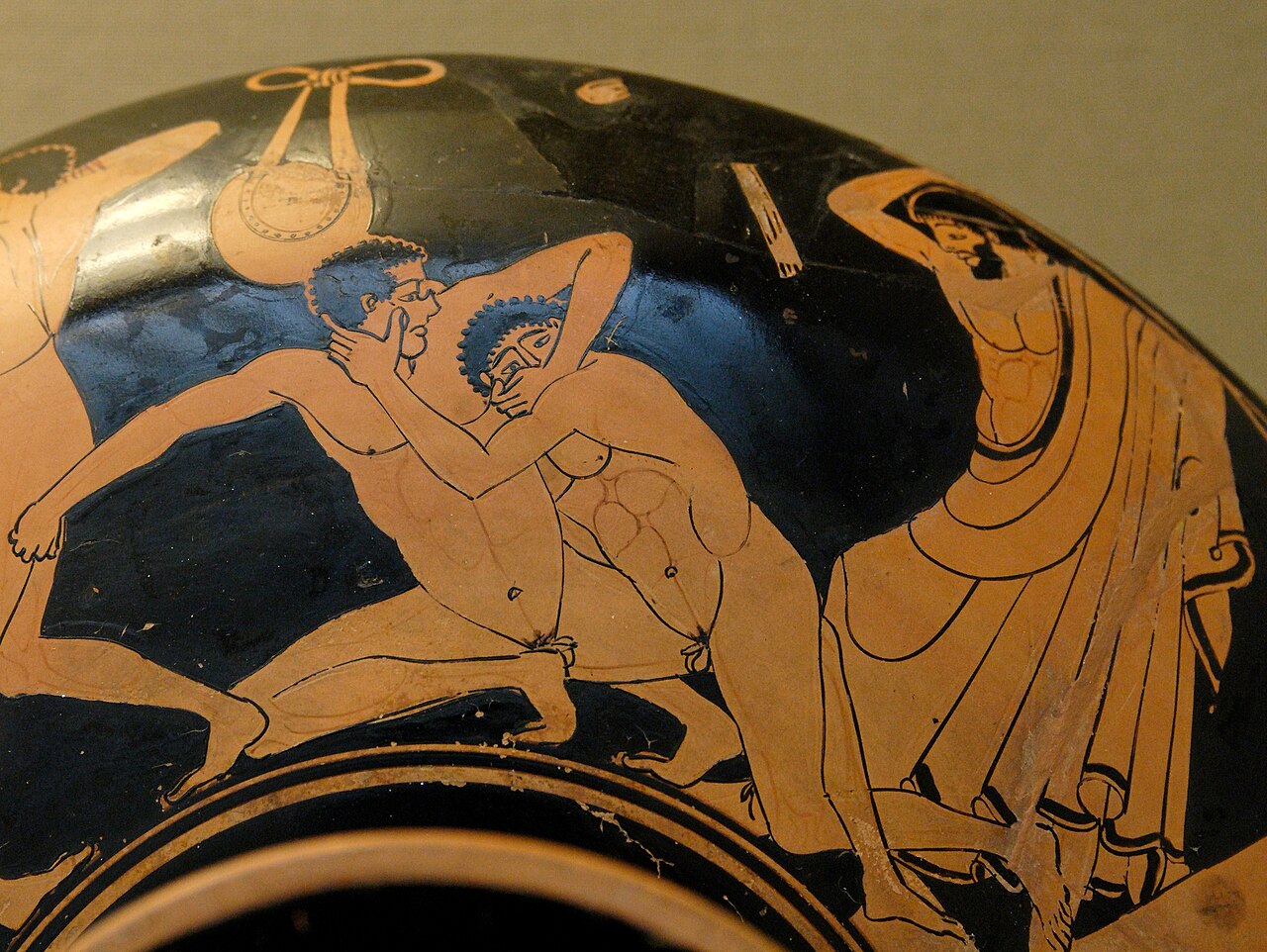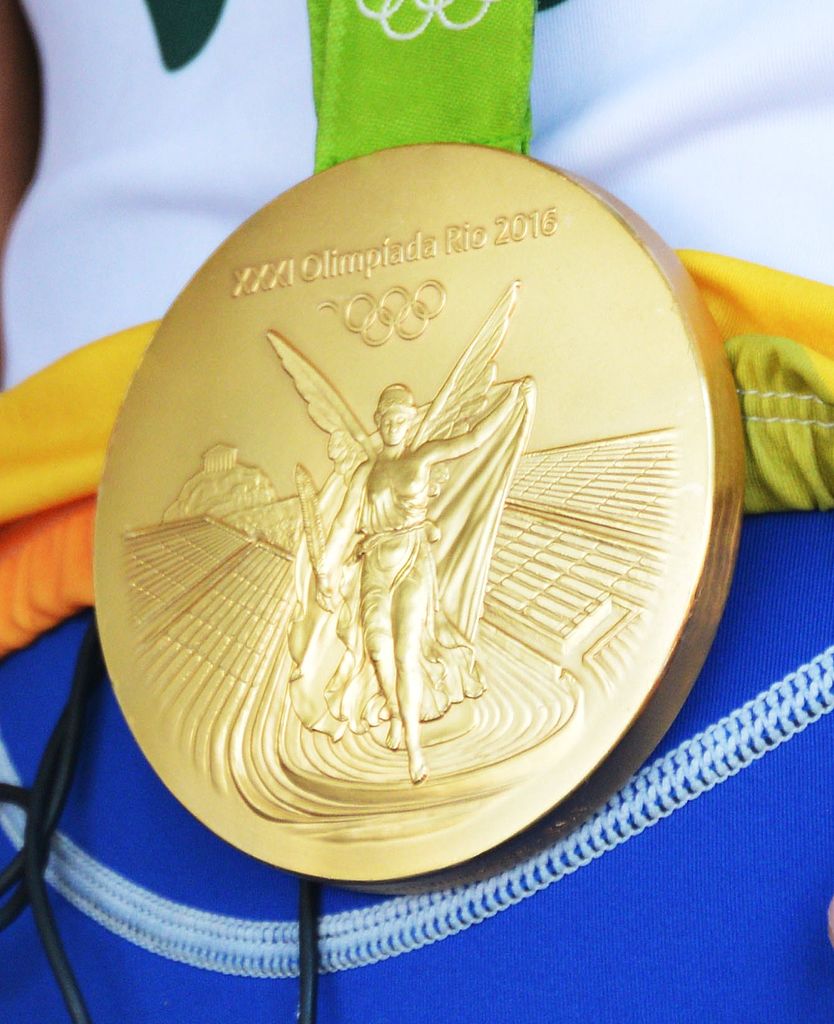Unit 1: Why Study Greek Mythology?

Before You Read
Discuss the following questions with a classmate.
- What do you know about the Olympics?
- Do you like to watch the Olympics?
- What kinds of sports do you know of that are Olympic events?
- How long do you think the Olympics have been going on?
- What is the significance or importance of the Olympic Games?
- Skim the next reading. What do you think is the author’s purpose of the text: to inform, entertain, or to persuade? How will that affect the way you take notes on the reading?
Vocabulary in Context
These sentences are from the next reading. As much as possible, you should guess vocabulary while you read and avoid using the dictionary unless you feel you don’t understand the material. Use the context of the topic and the sentence to guess the meaning of the words in bold.
- In some ways—such as the inclusion of women athletes, the high-tech training, and the logo-laden uniforms—today’s Olympics are utterly modern.
- Olympians were men of rank and riches: only the wealthy could afford time to train, the money to buy equipment or horses and armor for equestrian competition, and the means to travel safely and quickly to the games by mule, cart, sea, or horse-drawn chariot.
- We’ve all seen “brought to you by McDonald’s” and laughed about Olympic athletes sitting around a fast food joint gorging on fries and milkshakes.
- Some of the most prestigious wreaths of victory went not to the athletes themselves but to men whom we would call ‘sponsors.’
- Though competition is individual, an athlete never makes it to the Olympics by himself– he shares his glory with his city-state and the patrons who paid his way.
- For those who couldn’t make the journey to see the new celebrity, poets such as Pindar wrote odes to the triumphant athletes to share with the masses.
- The act of valiantly pushing one’s body to the brink of endurance, perfection, and even injury for team and country is still a primal embrace of survival—and of community spirit.
Vocabulary Building
Find the word in the paragraph given. Use the synonyms and definition to help. (Definitions from Merriam-Webster Learner’s Dictionary.)
- P1: an amazing event to watch (n.)
- P2: something coming back and becoming popular again (n.)
- P2: a number of things arriving or happening at the same time (n.)
- P2: respect and admiration (n.)
- P6: wanting, hoping to achieve something (adj.)
- P7: financially supporting someone (n.)
- P8: someone who gains power through wealth (n.)
- P12: original, first, in early times (adj.)
Grit, Money, Glory: Olympics Then and Now
Adapted from an article by Sarah Waldorf for The Iris, $\ccby$
This weekend marked the start of the 2012 Olympics, a spectacle with 10,500 Olympic and 4,200 Paralympic athletes in competition across 26 sports, from handball to taekwondo to the good old-fashioned pentathlon.
The Olympics we’re familiar with today are an elaborate revival of the ancient Greek ceremonies held to honor the god Zeus, once held from 776 BCE until they were banned by the Roman Empire in 393 CE. Since the first modern games began in 1896 due to the encouragement of Pierre de Coubertin, the Olympics have grown in size and prestige. But in this flurry of national competition, intense sport, and celebration, has that much really changed since the early Olympiads?
In some ways — such as the inclusion of women athletes, the high-tech training, and the logo-laden uniforms — today’s Olympics are completely modern. But in others, as curator David Saunders explained to me in a recent visit to the “Athletes and Competition” gallery at the Getty Villa, they’re hardly different at all.
Sports Demand Money, Beauty, and Grit
Sports are an expensive business, and it was no different in ancient times. Olympians were men of rank and riches: only the wealthy could afford time to train, the money to buy equipment or horses and armor for equestrian competition, and the means to travel safely and quickly to the games by mule, cart, sea, or horse-drawn chariot.

Then as now, the ideal body type was a young man of healthy, muscular, and equal proportion — an athlete. The Greek ideal nude was male, and all athletes were, of course, male as well. Many sculptures of ancient athletes show them not in action, but at rest, the better to admire their form.
Physical beauty, wealth, and time were not the only requirements for aspiring competitors. High pain tolerance and strength were needed as well. In A.D. 220, author Tony Parrottet points out, it was noted that “Eurydamas of Cyrene won the boxing, even though his opponent knocked out his teeth. To keep his opponent from having any satisfaction, he swallowed them.”
Sponsors Claim Their Share of Glory

We’ve all seen “brought to you by McDonald’s” and laughed about Olympic athletes sitting around a fast food joint gorging on fries and milkshakes. But though there weren’t any corporate logos at the ancient games, the idea of sponsorship isn’t new.
Mary Beard writes about the Olympics, “Some of the most prestigious wreaths of victory went not to the athletes themselves but to men whom we would call ‘sponsors.’ The most well-known event of the Games was the chariot race, but the official winner was not the man who actually did the dangerous work, standing in the chariot and controlling the horses, but the king, prince or plutocrat who had funded him and paid for the training.”
Though competition is individual, an athlete never makes it to the Olympics by himself – he shares his glory with his city-state and the patrons who paid his way.
Athletes Carefully Cultivate Their Image

Today, young sports fans use posters of famous athletes to keep their dreams alive. Parents and children alike scream their heads off at athletic events, tremble with excitement at autograph signings, and actually spend money on bobblehead versions of their favorite players.
Image was important to ancient athletes too. Wealthy ancient winners had sculptures carved celebrating their bodies and their victories, to be displayed extravagantly at the arena and in their hometowns. For those who couldn’t make the journey to see the new celebrity, poets such as Pindar wrote odes to the triumphant athletes to share with the masses.
Beyond these factors, not much has changed since ancient times for another reason, too: the act of courageously pushing one’s body to the brink of endurance, perfection, and even injury for team and country is still a primal embrace of survival — and of community spirit. Even if there is some hand-to-hand combat and a broken tooth or two.
Comprehension and Critical Thinking Questions
Answer the questions below according to the reading using your own words. Make a note of where you found the answer in your reading.
-
- Who were the ancient Olympics dedicated to?
- Why did the ancient Olympics end?
- Fill in the chart with information from the reading, discussion with a partner, and your own knowledge about the similarities and differences between the ancient and modern Olympics.
| Similarities | Differences |
|
|
|
|
|
|
|
|
|
|
|
